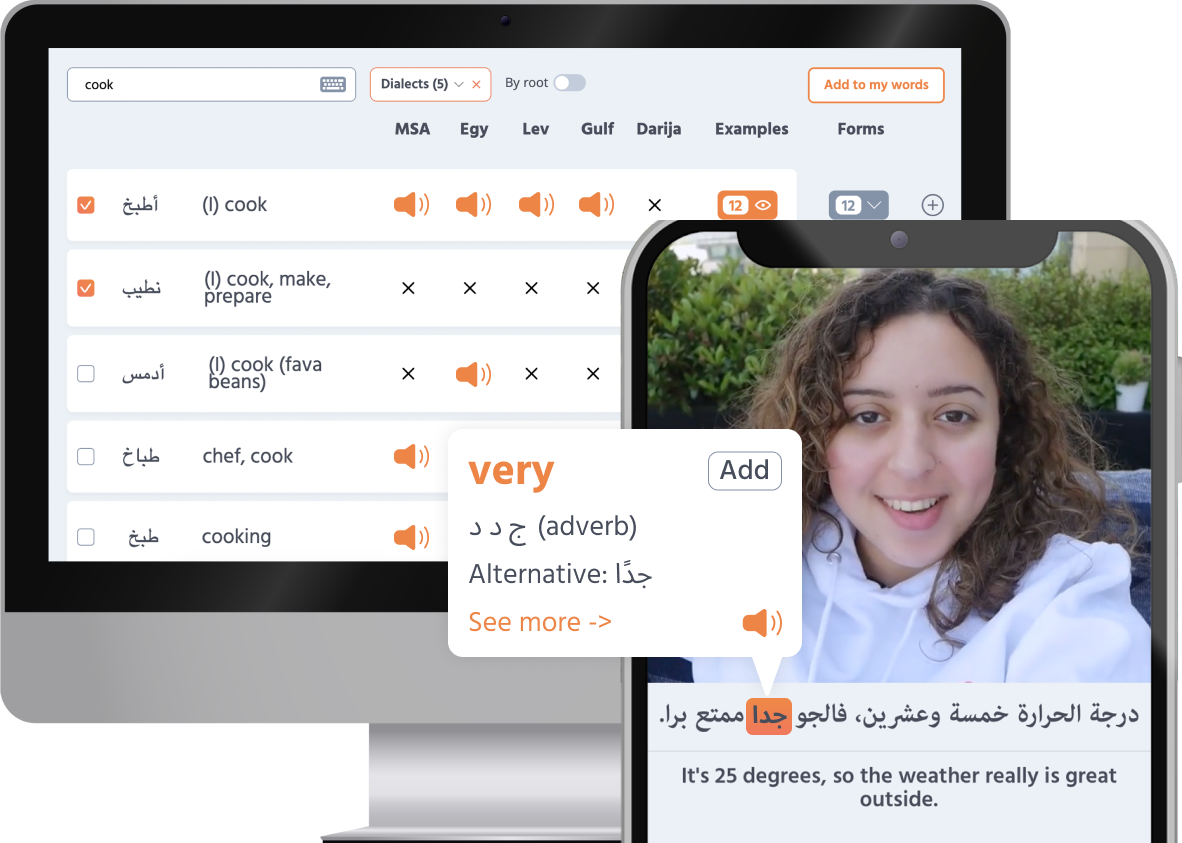Hold onto your turbans, because we’re about to dive into a fascinating journey where shoes transform from mere footwear to powerful symbols of social standing, protest, insult, and even respect. In the Arab world, shoes aren’t just for walking; they carry deep cultural significance and emotional weight.
Imagine a world in which the condition of your shoes can define your character, where showing the sole of a shoe is akin to delivering a grave insult, and where the act of throwing a shoe can be a potent symbol of protest. This article will explore these intriguing aspects, uncovering how an ordinary shoe can hold extraordinary power in Arab society.
Through vivid examples, historical anecdotes, and cultural insights, we’ll reveal how shoes become powerful communicators in relationships, politics, etiquette, and religious practices.
Common words for footwear in Arabic
In Arabic, the word for “shoes” varies across different dialects, reflecting the rich linguistic diversity of the Arab world. While Modern Standard Arabic (MSA) serves as a common foundation, regional dialects such as Levantine , Egyptian , Gulf , and Maghrebi (Darija ) have their unique terms and expressions. This table provides an overview of the most common words for “shoes” across these different varieties of Arabic.
English Standard Levantine Egyptian Gulf Darija Notes shoe (any type) حذاء
حذاء
جزمة
جوتي
صبَّاط
كندرة/قندرة are unique to Jordan/Palestine/Syria. walking shoes for men حذاء رجالي
صبّاط
جزمة
صبّاط
sole (of a shoe) نعل
نعل
نعل
نعل
فردة صباط
slipper, flip-flop نعل
شبشب
شبشب
شبشب
مشاية
Usually worn indoors but in the Gulf worn indoors and outdoors. sandal صندل
صندل
صندل
صندل
صندالة
clog, wooden sandal قبقاب
قبقاب
قبقاب
قبقاب
X Common in the past; now rare. boot حذاء طويل
بسطار
بوت
بوتي
بوطلي
In Levantine, بسطار and جزمة refer to tall winter boots and بوط can refer to either tall boots or athletic shoes. high heels حذاء بكعب عالي
كعب عالي
كعب عالي
كعب عالي
صباط بالطالون
Note that these terms can be used to refer to a pair of shoes or a single shoe. However, the word فردة
is usually used before the name of the shoe to refer to a single shoe in the Levant. Shoes and relationships
In Arab culture, a person’s shoes do more than just protect their feet—they also play a crucial role in how others perceive them. Clean, new, and well-maintained shoes are seen as a reflection of a person’s tidiness, respectability, and generosity. On the flip side, shoes that are dirty and worn out can suggest that the person is unclean, careless, or even stingy. This cultural judgment is particularly prevalent among women, who often assess men based on the state of their footwear. In this context, shoes are not just an accessory but a statement of character and status.
In the scene below from a widely-watched Jordanian show, a girl lists important attributes for her in a potential suiter: job position, salary, social status, the type of car he drives, and the condition of his shoes. This internal dialogue underscores the significance of shoes in Arab dating culture where external appearance, particularly footwear, is a proxy for personal qualities and socioeconomic status.
From “Female,” one of the most popular TV shows in Jordan .This connection between shoes and relationships isn’t just confined to media portrayals; it resonates deeply in everyday interactions within Arab societies. Whether it’s a formal gathering, a casual meeting, or a potential romantic encounter, the condition of one’s shoes can speak volumes, influencing perceptions and judgments in subtle but profound ways. So, gentlemen, if you want to make a lasting impression, ensure your shoes are always in top-notch condition. After all, a sparkling shoe might just be the key to a sparkling relationship!
Shoes as symbols of protest and contempt
While most people around the world see shoes as mere protective gear for their feet, in the Arab world, they carry a weighty significance, capable of delivering powerful messages of protest and contempt.
In 2008, an Iraqi journalist, Muntadhar al-Zaidi, threw his shoes
In 2018, Palestinians in Gaza greeted a Bahraini delegation with raised shoes, to signal of their contempt and rejection of the delegation’s efforts to establish relations with Israel:
From السليط الإخباري. Placing shoes on photos, statues, or flags is a common way to show disrespect or to denounce political figures and actions.
Sitting etiquette and shoe soles
In Arab culture, sitting etiquette and the visibility of shoe soles are significant indicators of respect. Exposing the sole of a shoe by crossing your legs can be seen as highly disrespectful, especially towards elders or those of higher status. This gesture implies a lack of regard for the other person, suggesting they’re beneath you.
Media often highlight these norms. For example, a Lebanese woman discussed how men should avoid sitting in ways that show the sole of their shoe, as it can be perceived as a sign of arrogance and disrespect:
From the TV show (صباح العربية). This posture is less significant when adopted by women, illustrating cultural nuances in body language.
While younger generations influenced by Western customs may be more lenient about these norms, awareness of traditional etiquette remains important, especially in conservative or formal settings. Understanding the cultural significance of shoe soles and sitting etiquette is crucial for respectful social interactions in Arab societies.
Respect in Islamic culture
In Islamic culture, shoes play a crucial role in maintaining cleanliness and showing respect, particularly in religious settings. One of the most significant customs is the removal of shoes before entering a mosque.
This practice is not merely a matter of hygiene but a profound gesture of reverence towards the sacred space. The mosque is a place for prayer and reflection, and keeping it free from the dirt and impurities that shoes can carry is a way to honor the sanctity of the environment.
Beyond the mosque, there are other customs related to shoes that reflect respect and religious sensitivity. For instance, it is generally frowned upon to leave shoes or flip-flops upside down. Some believe that this positioning is disrespectful towards God, as it exposes the dirty soles upward. This belief leads many to quickly flip their shoes back to their proper orientation, ensuring that they face the ground.
These customs extend to the broader social context as well. When visiting someone’s home, it is customary to remove shoes upon entering, a practice that signifies respect for the host and the cleanliness of their home. This gesture acknowledges the importance of maintaining a clean and respectful environment, aligning with the values seen in religious practices.
Furthermore, these shoe-related customs have theological underpinnings. In Islam, cleanliness is an essential aspect of faith. The Prophet Muhammad emphasized the importance of cleanliness in various aspects of life, and this extends to practices involving shoes. Ensuring that one’s footwear does not bring impurities into a sacred or private space is part of a broader commitment to living a clean and respectful life.
Shoe-related insults and expressions in Arabic
In Arab culture, shoes are not only significant in terms of etiquette and respect, but they also serve as powerful tools for insults and colorful expressions. The language surrounding shoes is rich and varied, often used to convey disdain, frustration, or outright contempt.
One of the most common insults involves calling someone a “son of a shoe” (يا ابْنِ الجَزْمَة
in Egyptian or يا ابْنِ الصُرْمَاية
in Levantine. In Jordan and Palestine, you might hear يا ابْن الكُنْدَرَة
). By calling someone a “son of a shoe,” the insulter not only devalues the individual but also casts aspersions on their upbringing and familial respectability. It’s a gentler, albeit still potent, alternative to harsher insults like “Son of a dog” (ابْنِ الكَلبْ)
, but it still conveys a deep sense of contempt and disrespect, resonating with cultural values that prioritize familial honor and dignity.
When describing a group of people as foolish or worthless, you might hear كُلُّهُمْ جِزَمْ
(they’re all shoes) in Egypt, while in the Levant, they might hear كُلْهُم صَرَامِي
(They’re all shoes). These expressions suggest that the individuals in question are as insignificant or useless as a collection of old shoes.
Similarly, to criticize someone’s stubbornness or lack of intelligence, Egyptians might say دِمَاغُه جَزْمَة
(His brain is a shoe) or in the Levant, مُخُّه صُرْمَايَة
(His brain is a shoe). These phrases equate a person’s mind with a shoe, implying a lack of functionality or value.
Threats involving shoes are also common. For instance, saying هَدّيلُه بِالجَزْمَة
(I’ll hit him with a shoe) in Egyptian, رَحْ أصَرْمِيه
(I’ll “shoe” him) in Syria and Lebanon, or رَحْ أكَنْدِرُه
(I’ll “shoe” him) in Jordan and Palestine. Note how in Levantine, the word for shoe gets transformed into a verb.
And if someone deserves a good old-fashioned beating, you can say, عَاوِزْ ضَرْبْ الجَزْمَة
in Egyptian or بِدُّه ضَرِبْ بِالصُرْمَايَة
in Levantine (literally: he needs hitting with a shoe).
In the video above, a girl gets angry at a guy that doesn’t know the meaning of “vegetarian” and thinks she’s an atheist. She says, “Your brain should get hit with shoes,” implying he’s stupid. In moments of extreme frustration or when someone is considered utterly worthless, Egyptians might say ما يِسْوَاشْ جَزْمَة
(He’s not worth a shoe) or in the Levant, ما بيِسْوَى صُرْمَايَة
or ما بيِسْوَى كُنْدَرَة
(He’s not worth a shoe). This phrase equates the person’s worth to that of a discarded shoe, underscoring their perceived insignificance.
To tell someone to be quiet in a particularly harsh manner:
Egyptians might use اسْكُت وحُطْ جَزْمَة فِي بُقَّكْ
(Shut up and put a shoe in your mouth),
In Levantine Arabic, اسْكُتْ وحُطْ صُرْمَايَة بتُمَّكْ
or اسْكُتْ وحُطْ كُنْدَرَة بتُمَّكْ
(Shut up and put a shoe in your mouth). This expression vividly suggests that the person should silence themselves in the most degrading way possible.
Interestingly, shoes can also be used in expressions of respect, albeit in a seemingly paradoxical way. In Egyptian Arabic, saying جَزْمِتَكْ فُوق رَاسِي
(Your shoe is on my head) is a way of showing deference by way of demeaning or lowering oneself, much like bowing down. It’s a hyperbolic way of expressing deep respect, like when Egyptians put military boots on their heads to show love for the army.
In essence, shoe-related insults and expressions in Arabic are deeply embedded in the culture, reflecting a unique blend of humor, creativity, and societal values. Understanding these expressions provides insight into the richness of Arab linguistic and cultural practices, where even a humble shoe can convey a wide range of emotions and messages.
Oh, and by the way… If learning Arabic at your own pace, with fun, real-world videos sounds like your style, then Playaling could be exactly what you’re looking for!
With Playaling, you’ll dive into any major Arabic dialect or MSA. Our diverse range of videos has it all—from everyday conversations and cultural moments to music videos, TV and movie clips, influencer content, news broadcasts, and inspiring talks.
Our interactive captions let you tap any word for instant translations, context, and audio. So, real Arabic content becomes accessible with just a click. Miss something? No problem—rewind and listen as often as you need, or hover over subtitles for quick definitions.
Spot a word you want to learn? Save it to your personalized word set, or dive into curated sets for focused practice and easy review.
Interactive exercises let you dive in and practice what you’ve learned.
Need to look something up? The Audio Dictionary has you covered with clear human pronunciations and real world examples.
It’s a learning experience that keeps you engaged, bringing authentic, real-world Arabic closer to you every step of the way.
Give it a try!









